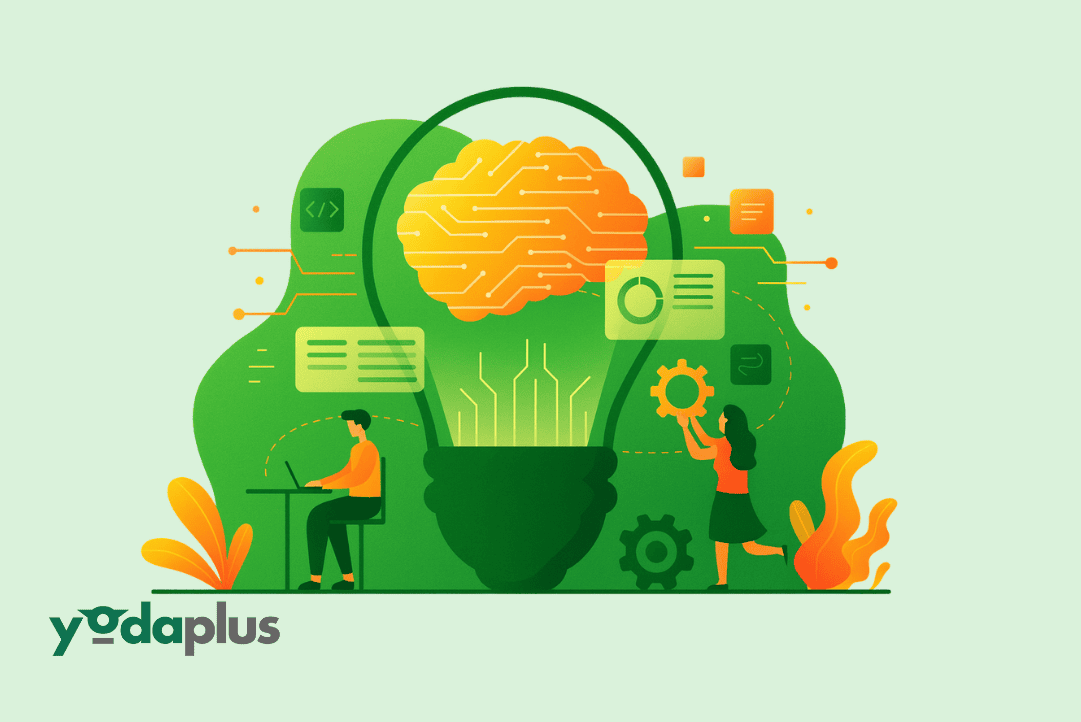
How Synthetic Data Accelerates Agentic AI Development
October 15, 2025 By Yodaplus
Artificial Intelligence (AI) has transformed how machines learn and make decisions. Yet, one of the biggest challenges in developing agentic AI systems is the availability of large, diverse, and high-quality datasets. Real-world data is often incomplete, biased, or expensive to collect. This is where synthetic data plays a key role in accelerating AI model training and improving AI-powered automation. It is artificially generated by AI technology such as Generative AI and machine learning models. It mimics real-world scenarios without exposing sensitive or restricted information. In Agentic AI development, this approach enables AI agents to train, adapt, and make intelligent decisions in controlled environments, making them more reliable, flexible, and autonomous.
What Is Synthetic Data and Why It Matters
Synthetic data is not collected from the real world but produced by Artificial Intelligence algorithms. It represents realistic patterns, behaviors, and edge cases that human-collected data may not capture. Unlike traditional datasets that rely on manual labeling or human collection, this data can be scaled, customized, and refined for specific AI applications.
For agentic frameworks; where autonomous agents learn through interaction and feedback—synthetic data provides an infinite learning playground. It helps in:
-
Generating varied scenarios for workflow agents and multi-agent systems.
-
Testing decision-making skills of intelligent agents under rare or risky conditions.
-
Enhancing self-supervised learning and Deep Learning models without real-world exposure.
Simply put, synthetic data enables AI systems to practice before they perform—much like pilots training in a flight simulator.
The Link Between Synthetic Data and Agentic AI
Agentic AI is built on the idea that AI agents should not just analyze information but also act on it intelligently. These agents operate in complex, dynamic environments where real data alone cannot cover every possibility. By using synthetic data, developers can create diverse simulated worlds for autonomous systems to explore and learn from.
For example, in AI in logistics, this data can simulate delivery conditions, demand fluctuations, and routing challenges. In AI in supply chain optimization, it helps model disruptions like delays or equipment breakdowns to train autonomous AI for predictive actions.
Synthetic data also supports AI-driven analytics and AI-powered automation by ensuring models are trained on balanced, unbiased datasets. This improves model explainability and reduces risks during real-world deployment, a crucial part of Responsible AI practices and AI risk management.
How Synthetic Data Enhances Learning in Agentic Systems
Agentic systems rely on continuous learning loops where agents perceive, decide, and act. Synthetic data generation strengthens each phase of this loop:
-
Perception: By creating varied synthetic inputs, AI models can learn to recognize patterns across text, images, and sensor data.
-
Decision: Controlled simulations allow AI agents to test and refine strategies safely.
-
Action: Agents can apply learned actions within synthetic settings, gaining feedback that sharpens their decision-making.
With advancements in Generative AI and Neural Networks, synthetic data can replicate complex human-like behavior, making Agentic AI training more realistic. When combined with tools like Crew AI or MCP-based architectures, these synthetic environments enable agents to collaborate and evolve together—forming multi-agent systems capable of complex problem-solving.
Application in the Broader AI Ecosystem
Beyond Agentic AI, synthetic data benefits several Artificial Intelligence in business applications. In AI model training, it reduces dependency on proprietary data and enhances AI innovation. In AI workflows, it enables faster iteration and scalability.
Industries such as finance, retail, and manufacturing use synthetic data for risk forecasting, AI-driven analytics, and AI-powered automation. In retail, for instance, Artificial Intelligence solutions powered by synthetic datasets can predict demand patterns and enhance supply chain agility.
By integrating semantic search, vector embeddings, and knowledge-based systems, AI frameworks can contextualize these datasets and make them more meaningful. This structured learning accelerates the creation of reliable AI models that perform consistently in the real world.
The Future
As Agentic AI evolves, the combination of Generative AI and synthetic data will redefine how AI agents are trained and deployed. Instead of relying on static datasets, future agents will learn dynamically within synthetic, evolving ecosystems.
This shift will lead to autonomous AI systems that adapt to changing goals and environments, creating a new generation of intelligent agents that can think, learn, and collaborate. Synthetic data will continue to drive this change by providing the scale and diversity needed for continuous improvement.
In the coming years, AI frameworks that integrate synthetic data generation, self-supervised learning, and agentic architectures will become the foundation for scalable, safe, and adaptive AI ecosystems.
Conclusion
Synthetic data is not just a substitute for real data. It is the fuel that powers the next era of Agentic AI. By accelerating AI model training, enabling safer simulations, and supporting continuous learning, it allows autonomous systems to evolve intelligently and responsibly.
Yodaplus Artificial Intelligence Solutions in business and AI technology in logistics show how this data ensures every AI agent learns efficiently, acts effectively, and contributes to a smarter, more autonomous digital world.
